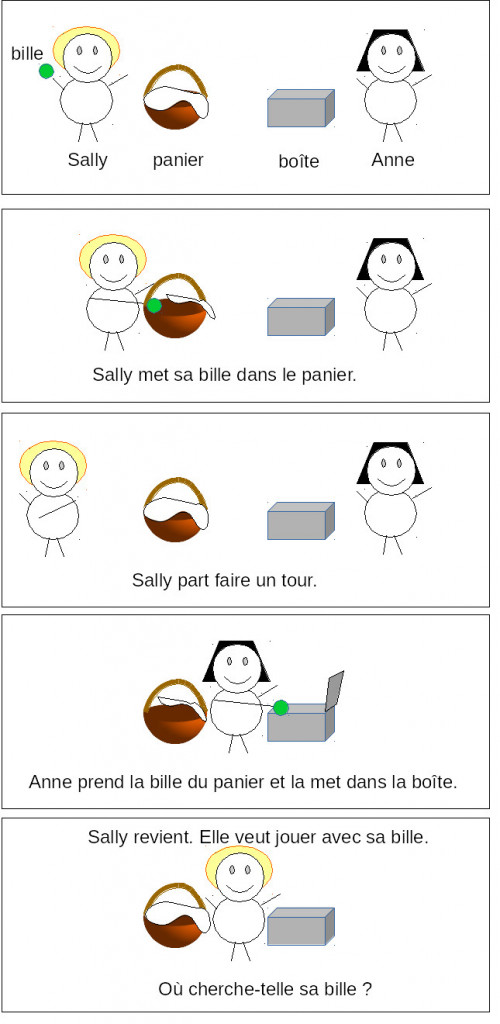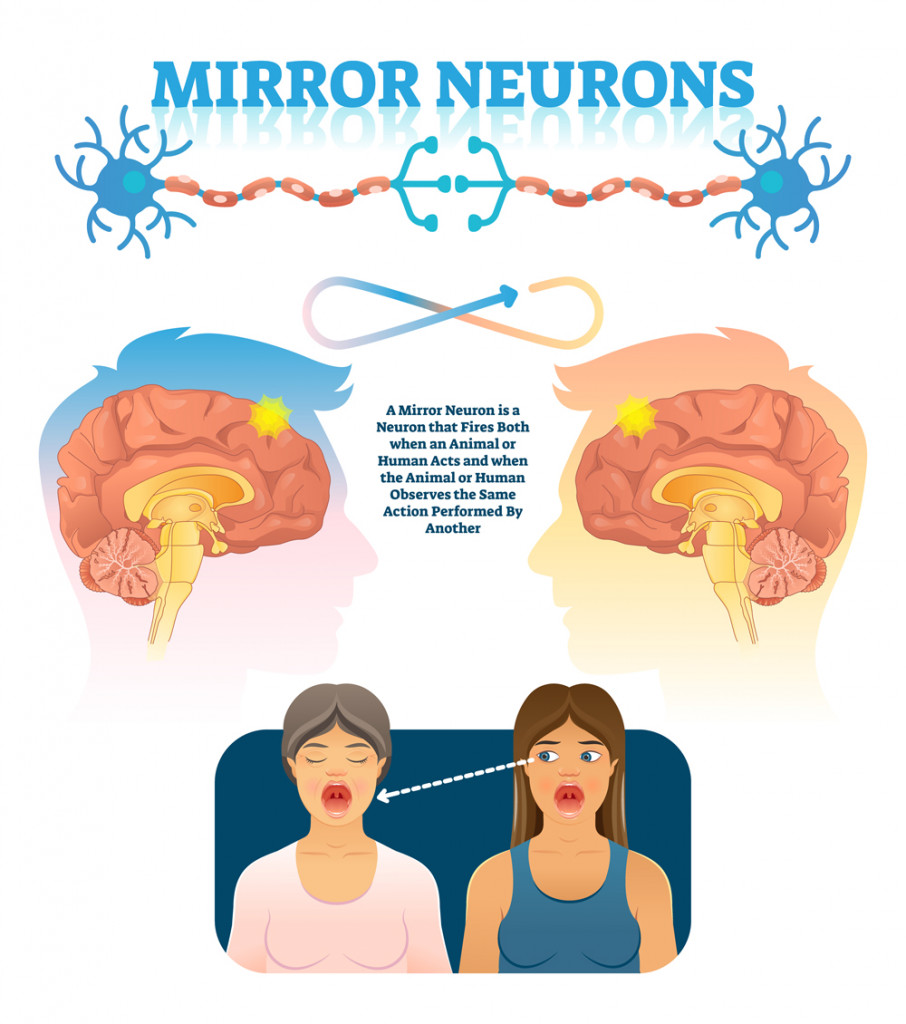Table of Contents (click to expand)
Our brains house a “Mirror neuron system” that is engaged when we observe actions. It internally “mirrors” observed actions and helps to understand them, thus generating empathy.
We use empathy in our day-to-day lives when we come across the experiences of others – good or bad. We feel happy when we hear happy stories, and tear up when hearing sad ones.

Humans are innately empathetic creatures. We show signs of empathy just a few days into coming to this world; human babies can empathize with others and cry when they hear another newborn cry, but how exactly do we experience emotions when they’re not ours to begin with?
What Is Empathy And Why Is It Important?
Psychology describes empathy as the “natural capacity to share, understand, and respond with care to the affective states of others”.
Although seemingly unimportant at first glance, empathy is a crucial skill that helps us socialize and communicate with other humans. It helps us understand the actions of others and the reasons behind their actions. Empathy evolved to promote cooperative behavior between individuals and can help to create bonding.

Studying individuals with an empathy deficit, such as those with psychopathic personalities, have helped us understand that the lack of empathy can lead to a reduced understanding of morality and aggressive behavior, thus making a person antisocial.
Also Read: Are We Born With Emotions Or Do We Learn Them Later?
The Mechanism Of Empathy
Research on empathy suggests that there are three components to empathy. The first is the perception of the emotions of another person and sharing the emotions, otherwise called ‘emotional contagion’. The second is the cognitive aspect of empathy, called “Theory of Mind” which helps us take the perspective of another person. This component helps us ‘place ourselves in someone else’s shoes’. The third component consists of mechanisms that help us feel sympathy for another person through understanding their experience. These together help us empathize and share the emotions of another person.
Also Read: What Is Theory Of Mind?
Theory Of Mind
The first affective component develops early in humans and is present even in babies. The second component – Theory of Mind (ToM), develops around 3-4 years of age. Individuals who lack ToM, such as those with Autism, show deficits in perspective-taking. The importance of ToM in our normal social functioning becomes clear when typical and autistic children are tested on a simple task—called the Sally Anne test.

In this test, each child is shown two dolls – Sally and Anne and given a scenario. Sally has a basket and Anne has a box. Sally puts a marble in the basket and leaves the room. In the meantime, Anne takes the marble and hides it in the box. Sally returns to the room. A typically developing child knows that Sally, who was briefly absent, will look for the marble in the basket. While this may look deceptively easy, an autistic child is unable to switch perspectives and therefore usually answers that the marble is in the box. Such deficits have a deep impact on our ability to interpret and understand social situations in our daily lives.
Neuroscience Of Empathy
Scientists claim that our ability to empathize comes from a “mirror neuron system” in the brain. Originally a part of our sensorimotor system and activated when we perform actions, mirror neurons also become active when we observe the same action performed by others. In a way, this system helps us internally “mirror” the actions of another person and better understand them.

Studies were conducted in which mirror neuron function was disrupted using brief external magnetic stimulation – called TMS (transcranial magnetic stimulation). Disrupting this network, located in regions such as the insula and cingulate cortex, led to problems in recognizing emotions. Similar findings were observed in studies on patients with lesions in these brain regions.
Furthermore, recent brain imaging studies demonstrate that our brains show comparable responses when we experience pain ourselves versus when we observe pain being inflicted on others. Together, these findings show that our brains respond by generating empathy when we indirectly observe actions by “mirroring” them internally using the mirror neuron system. Thus, although these actual events are not experienced by us, it is almost as if we ‘feel’ these experiences as our own.
Also Read: What Is The Connection Between Hormones And Emotions?
Dysfunctions Of Empathy
There is a broad range of disorders that result from the dysfunction of empathy skills. A deficit in the Theory of Mind component is seen in individuals with autism spectrum disorders. This only makes them unable to switch perspectives, but they can still experience and display empathy for others.
On the other hand, psychopathic personality disorders cause a deficit in the affective component of empathy. This means that such individuals do not have automatic emotional reactions to the experiences of others, making it difficult to feel sympathy or understand morality. Studies on such disorders provide a window into how disruptive a lack of empathy can be in our day-to-day lives.
A Final Word
Humans are inherently social beings, and empathy has a vital role to play in why this is so. Apart from helping to make us more prosocial and moral beings, empathy is important in helping us understand the intentions and actions of others. It helps us function as a unit in society.
The human brain bestows upon us the ability to share experiences with other beings, and glance briefly into their minds, which is nothing short of magic. Empathy is truly a superpower!
Also Read: What Makes Us Human And Separates Us From Animals?
How well do you understand the article above!

References (click to expand)
- Geangu, E., Benga, O., Stahl, D., & Striano, T. (2010, June). Contagious crying beyond the first days of life. Infant Behavior and Development. Elsevier BV.
- Decety J. (2011). Empathy: From Bench to Bedside. MIT Press
- van Dongen, J. D. M. (2020, April 16). The Empathic Brain of Psychopaths: From Social Science to Neuroscience in Empathy. Frontiers in Psychology. Frontiers Media SA.
- van Dongen, J. D. M. (2020, April 16). The Empathic Brain of Psychopaths: From Social Science to Neuroscience in Empathy. Frontiers in Psychology. Frontiers Media SA.
- KORKMAZ, B. (2011, May). Theory of Mind and Neurodevelopmental Disorders of Childhood. Pediatric Research. Springer Science and Business Media LLC.
- Does the autistic child have a “theory of mind”?* Abstract We use a new model of metarepresentational development to predict - ruccs.rutgers.edu
- Rizzolatti, G., & Craighero, L. (2005). Mirror neuron: a neurological approach to empathy. Research and Perspectives in Neurosciences. Springer Berlin Heidelberg.
- Zaki, J., Ochsner, K. N., Hanelin, J., Wager, T. D., & Mackey, S. C. (2007, September). Different circuits for different pain: Patterns of functional connectivity reveal distinct networks for processing pain in self and others. Social Neuroscience. Informa UK Limited.
